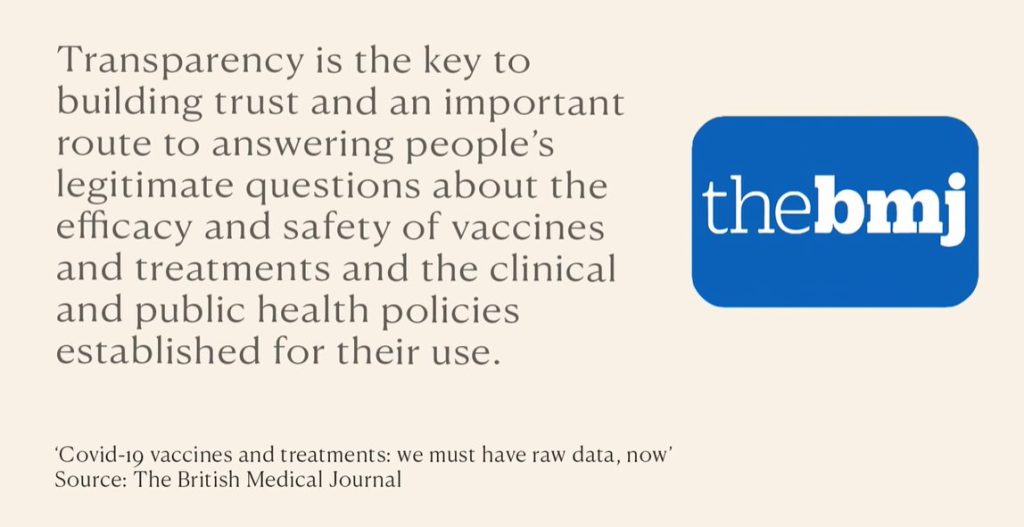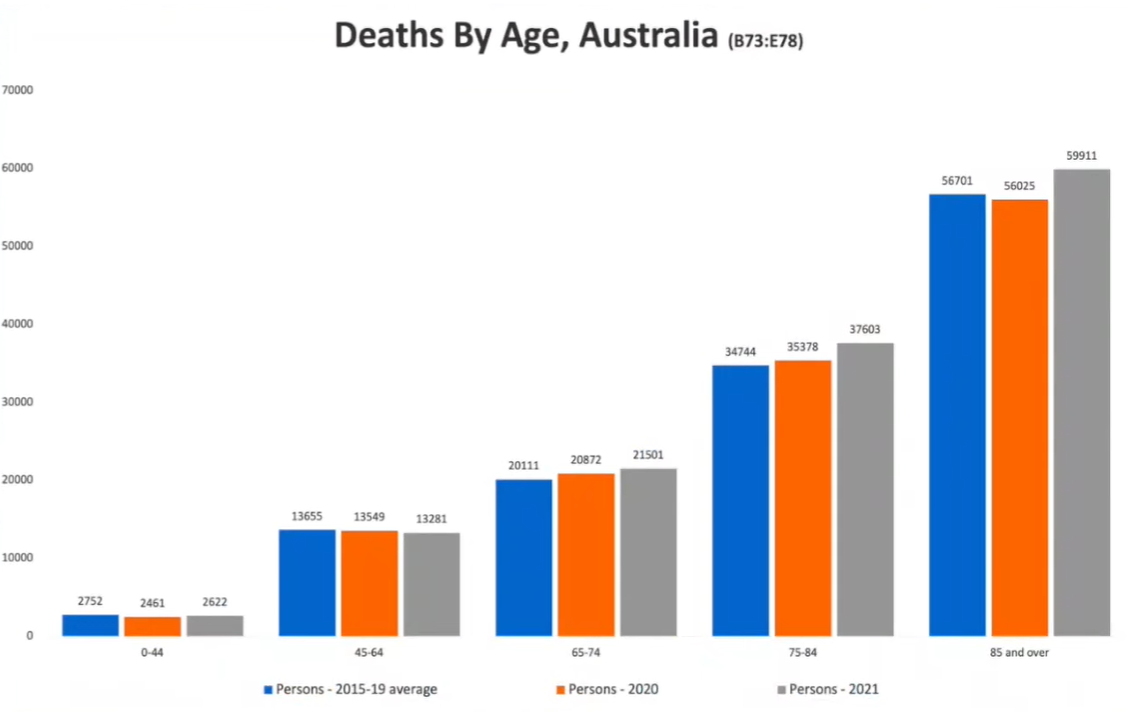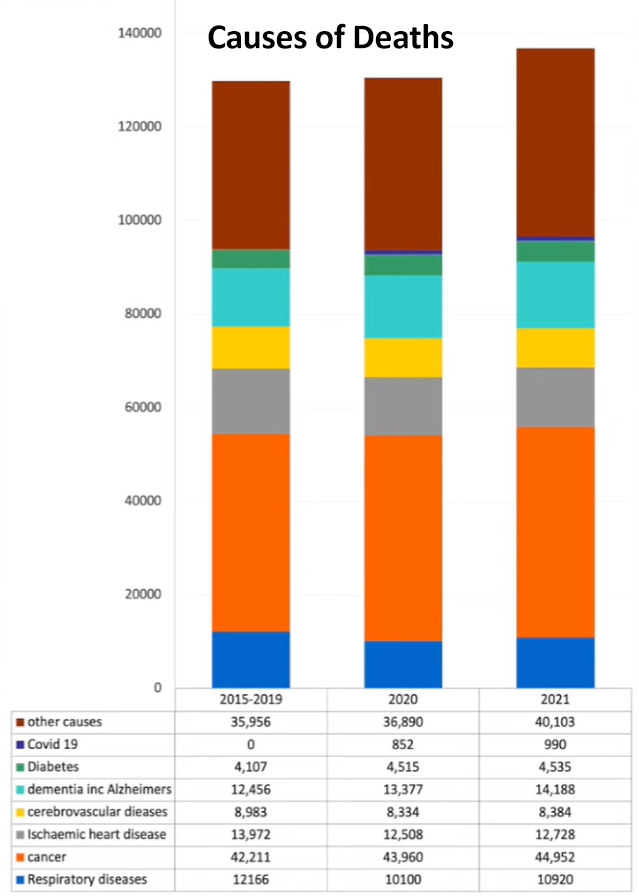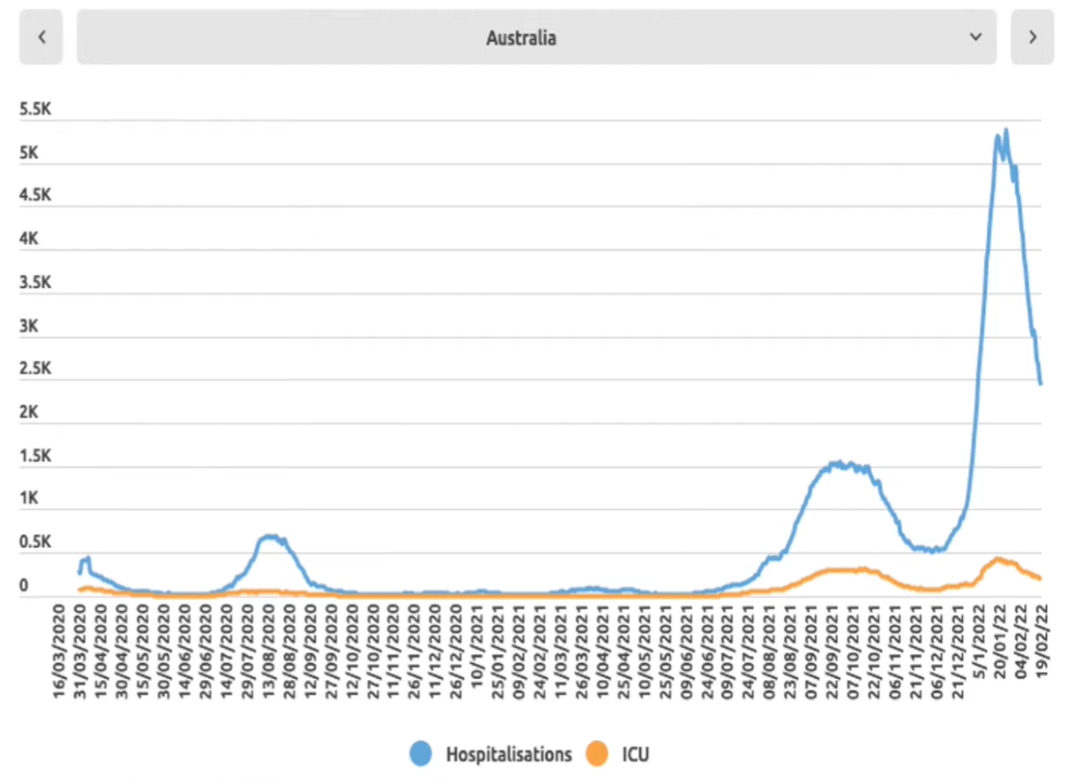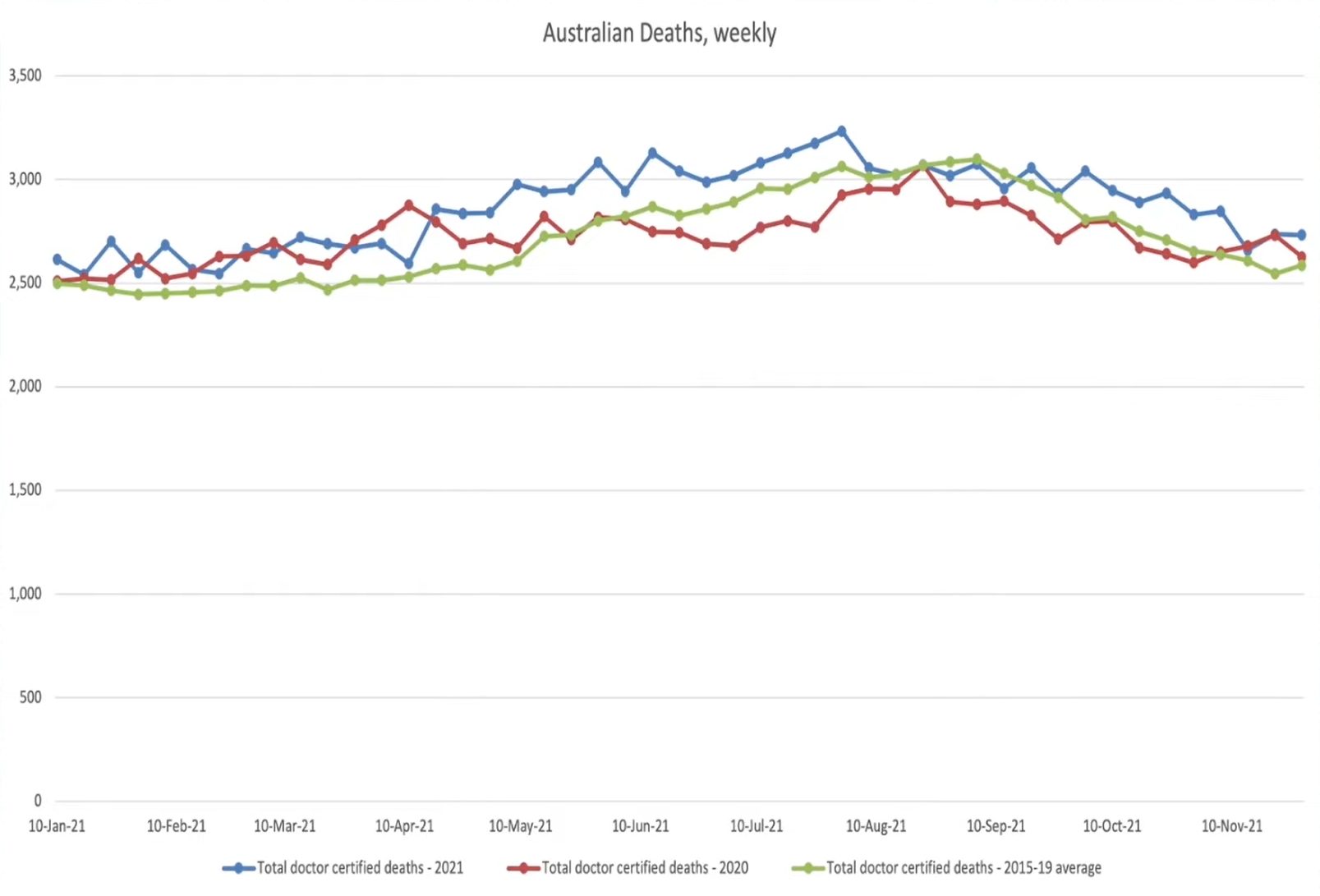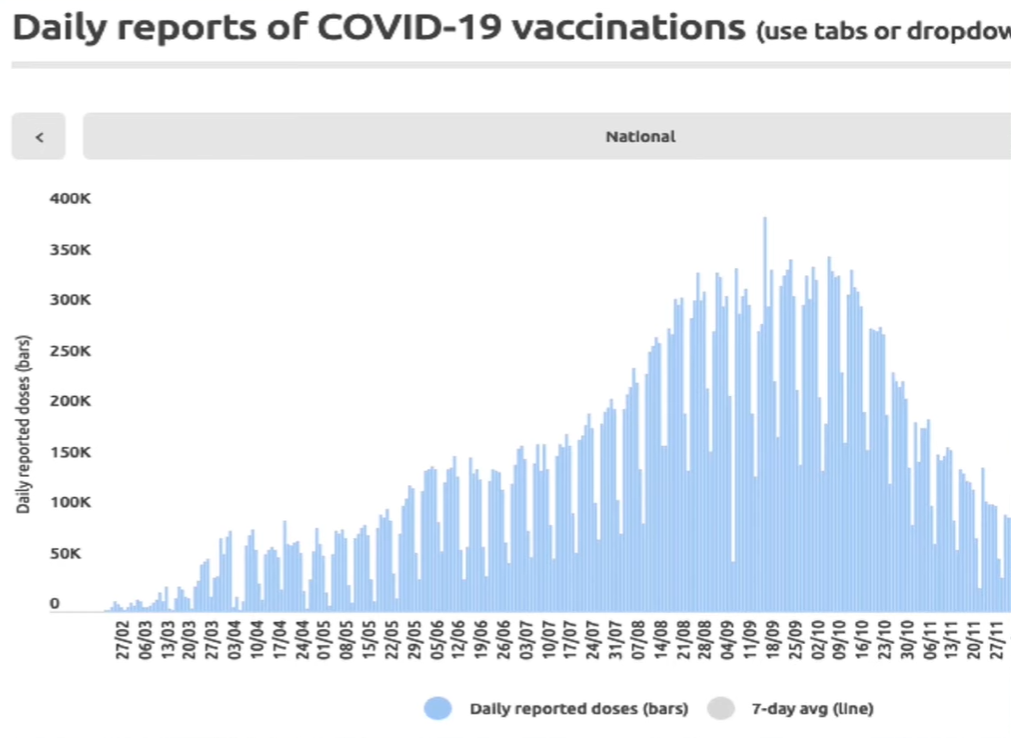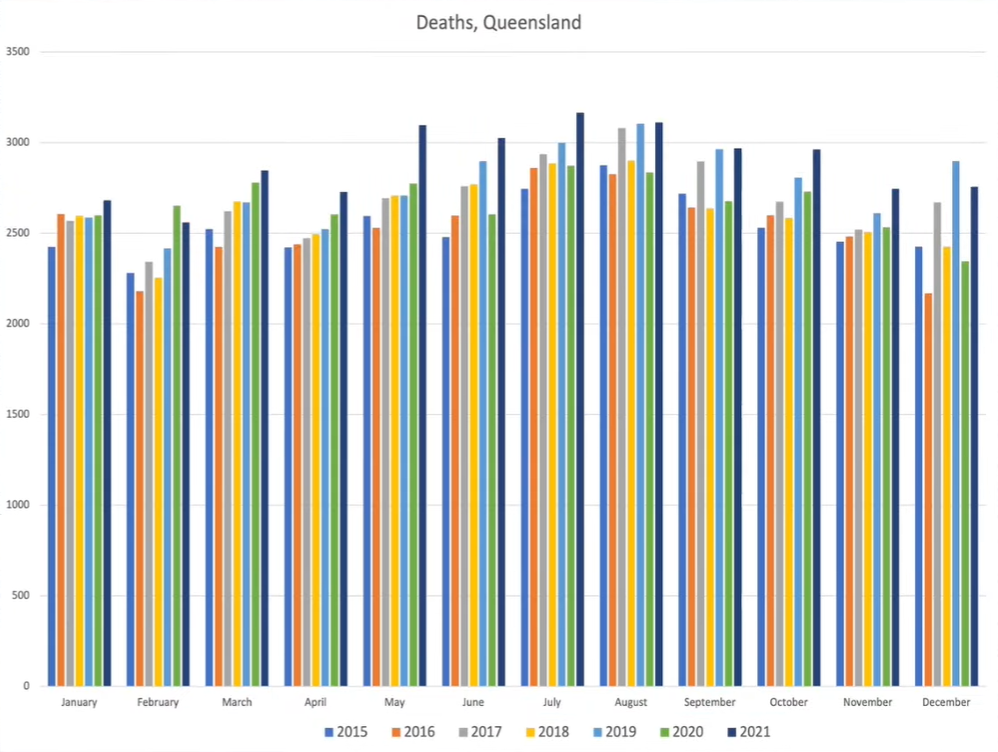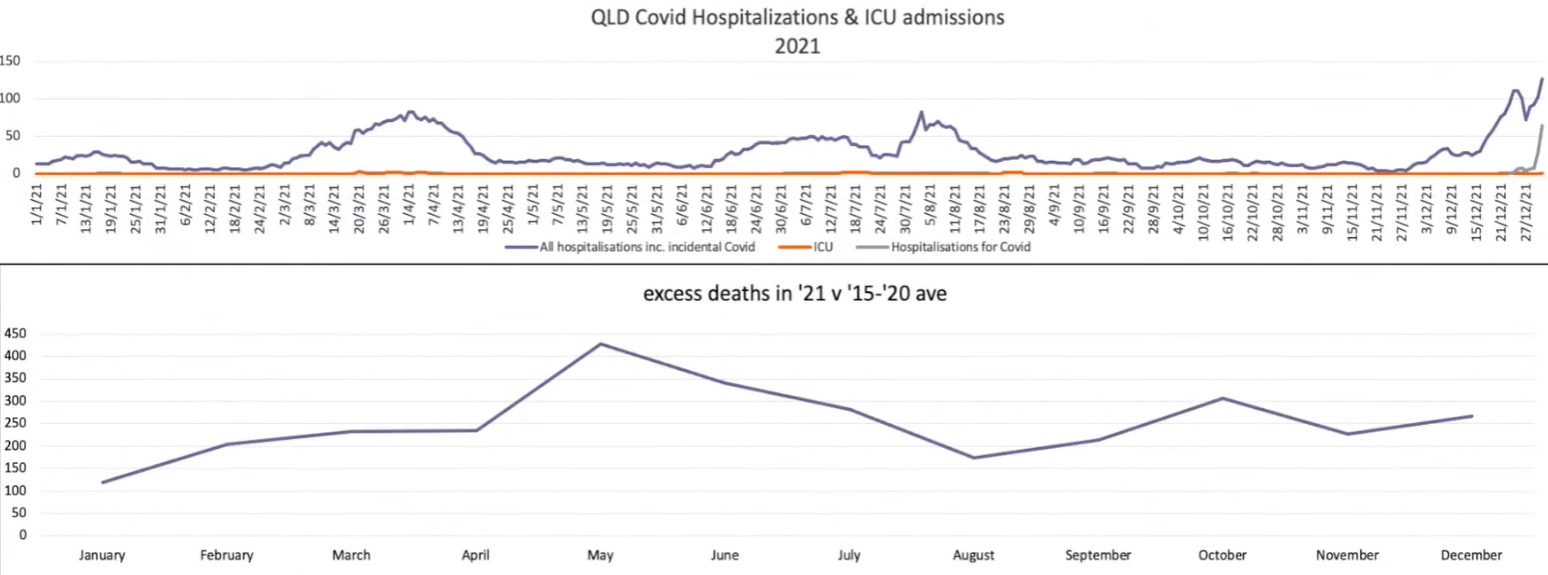Striking: on the other side of the globe they are with exactly the same question marks as here. How does it exist?
In the Netherlands, in 2021, we saw excess mortality continue in the summer months, which has never happened before. There was no Covid at the time, the tests showed. Covid deaths were hardly there. Mortality is higher in 2021 than in 2020, the year we were unprotected against the more severe Alfa variant.
CBS is doing its best to eliminate excess mortality as "Hidden Covid" and the causes of death that cause the largest increase in mortality are statistically covered in the category "other causes".
Parallels with the Netherlands
In Australia, Jessica Henderson, a concerned Australian citizen guest of Dr John Campbell, signals a death that cannot be attributed to Covid. The situation there is perhaps even more convincing than here in terms of "unexplained mortality". Australia has had virtually no Covid mortality. Simply assigning it to "Hidden Covid Deaths" is already not acceptable here but certainly not in Australia, looking at the course of the disease, positive rates and comparisons with 2020. In a period in which 9 confirmed covid deaths were counted, an unexplained excess mortality of 3,000 (her estimate – in my opinion too high) cannot simply be attributed to Covid.
Here the video with her presentation, below her graphs with Dutch summary for those who prefer to read.
Where Jessica has a point, in my opinion, is in the comparison between 2020 and 2021. How can 2021 have a substantially higher mortality rate than 2020 under similar circumstances? I find the comparison with the average of previous years less strong. That is not a good way of calculating expected mortality. I will come back to that at the end of this article.
Chart 1
The excess mortality in the summer months of January/February 2021 was 5.3% higher than the average in January/February 2015-2020, which represents an increase of 6,906 deaths, jessica says. All excess mortality was in 65+. The grey bars in Graph 1 represent 2021.
Chart 2
The pattern in the causes of death also shows great similarities with that in the Netherlands. Respiratory diseases as a cause of death have fallen back slightly in the Covid years '20s and '21s.
The upper brown part of the rod is "other causes". At 11% above average, this is the main driver of the increase (just like in the Dutch statistics of CBS).
The thin blue line below that is Covid mortality in Australia: a total of 990 people in 2021, which is more than 15% more Covid mortality than in the first unvaccinated Covid year 2020.
Chart 3
Australia had no major waves except omicron in December. A zero-covid policy and strict border security kept the population free of an epidemic.
Chart 4
2020, the red line, was a lockdown year for Australia with no vaccinations and with little Covid.
The blue line, 2021, is characterized as the vaccination year, starting with the vaccination of the elderly and vulnerable. There was no flu season. After a year of under-mortality (the red line), a year of higher mortality is not surprising in itself.
But without flu or Covid season, it is still remarkable: the higher mortality is structural from March April, not only in a flu peak.
[The red line shows that mortality was lower than the 2015-2019 average, but again: an average is a poor reference.]
Chart 5
The Vaccination Campaign began in February and reached the maximum number of jabs per day in August. In October, that dropped back again.
Chart 6
In Queensland, Jessica again compares 2021 with the average of the previous 5 years. It then comes to an excess mortality of 3,000 people. There were a total of 7 (seven) covid deaths in Queensland.
[Now, in previous years, an upward trend can be seen so the difference would have been much smaller if she had calculated the trend instead of the average.]
In addition, the years alternate neatly in terms of higher and lower mortality. After a year with a bit more mortality, a year with a little less mortality follows. The odd years go up quite steadily, as do the even years. In this sense, neither 2020 nor 2021 is an exceptional year in terms of excess mortality.
Nevertheless, 2021 continues to show the highest mortality ever, even in the absence of a flu season and above all: significantly higher than 2020, the covid year without vaccination. This raises questions.
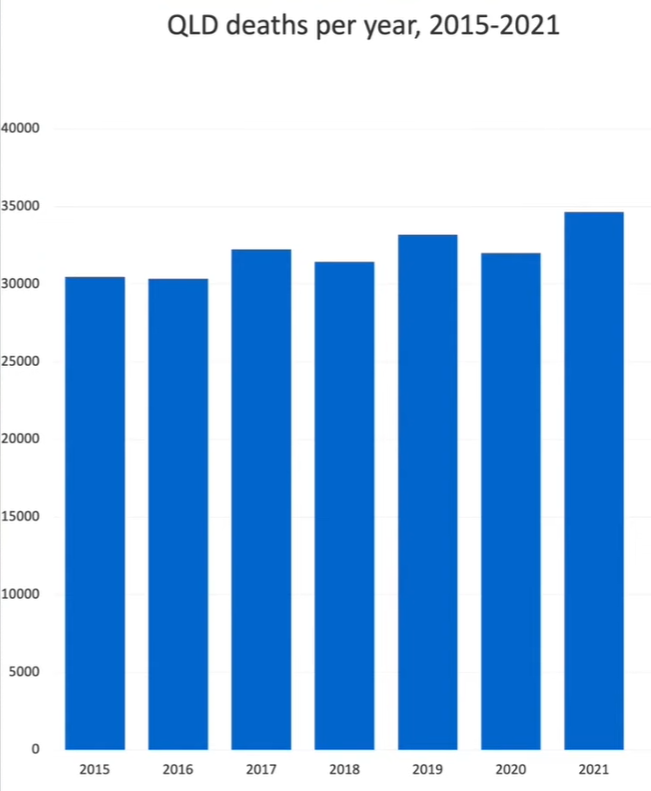
Chart 7
August and September are the months where the regular flu season played out with clear mortality peaks, especially in the odd-numbered years.
What about this?
The confused communication, the inconsistent data handling and the secret health information from the government with many demonstrable inaccuracies worries citizens. The lack of underlying data easily leads to wrong hypotheses.
Dr. John Campbell recognizes his own question marks and finds everything "very very interesting" while there is more to say about it. For example, he could have reassured Jessica about the disturbing "average" she used in different ways.
The 'average' as a false reference
Given the population structure, it is not surprising that the mortality rate is slightly higher every year. You can clearly see the rising trend in these blue bars. An upward trend automatically means that the last year is higher than the average of the previous years. 2020 was remarkably low, probably partly due to the lack of superspread events as a by-product of lockdowns and other measures.
Jessica doesn't have to worry so much about the "excessive deaths" in Australia based on an average. After all, excess mortality is highly dependent on the calculation of the "expected mortality" and this can take place in all kinds of ways. If you want to read more about that, see the links in an older article on this topic. There you also see that the population structure can make an average unsuitable to work with.
But 2021 more mortality than 2020: how is that possible?
However, the problem remains that 2021 has also had a significantly higher mortality in Australia than vaccination-free covid year 2020. With the underlying fact that neither the government nor the pharmaceutical companies want to release information in which those answers may be contained. The trial documents are released bit by bit, but the statistics are still not there: age-stratified causes and dates of death with vaccination dates. Worldwide, more and more analysts are focusing on the vaccinations in combination with the high "All-Cause Mortality".
Not only analysts and scientists are crying out for data, as we also read in the editorial of Peter Doshi in the British Medical Journal. ("We need raw data, now").
Russell Brand also covers that BMJ article, in his characteristically refreshing and occasionally hilarious way. He wonders how the wappie bashers feel now that terms such as 'immoral' and 'unethical' are also used in the respected British Medical Journal, when it comes to the dates and trials of the vaccinations.
– Do you want to buy a car?
– Could I have look at it?
–No
–No? Why not?
– What are you, a conspiracy theorist!?
– I'd just like a look at the car before I buy
– You can’t look at that car! What are you, a pervert, a right-wing conspiracy…
– OK, I won’t look at the car, just a look around it, see if it works or not…
– No you can’t, it’s private! You can have a look in 75 years otherwise you’re a conspiracy theorist! What are you, an anti-carrer? Where’s your tin hat!?
Corona may be done with us, but we are far from finished with how the corona fight has been shaped. How do we bring that to the surface? Motions are ignored or distorted, WOB requests sabotaged or delayed. In a parliamentary inquiry, parliament should expose its own dysfunctions. The composition of a special committee of inquiry will determine how damning or praising the verdict of the course of events is. A tribunal sounds so heavy again, but it seems to be the appropriate instrument for an issue that is international, very large-scale, ad hoc and circles around a specific problem.
